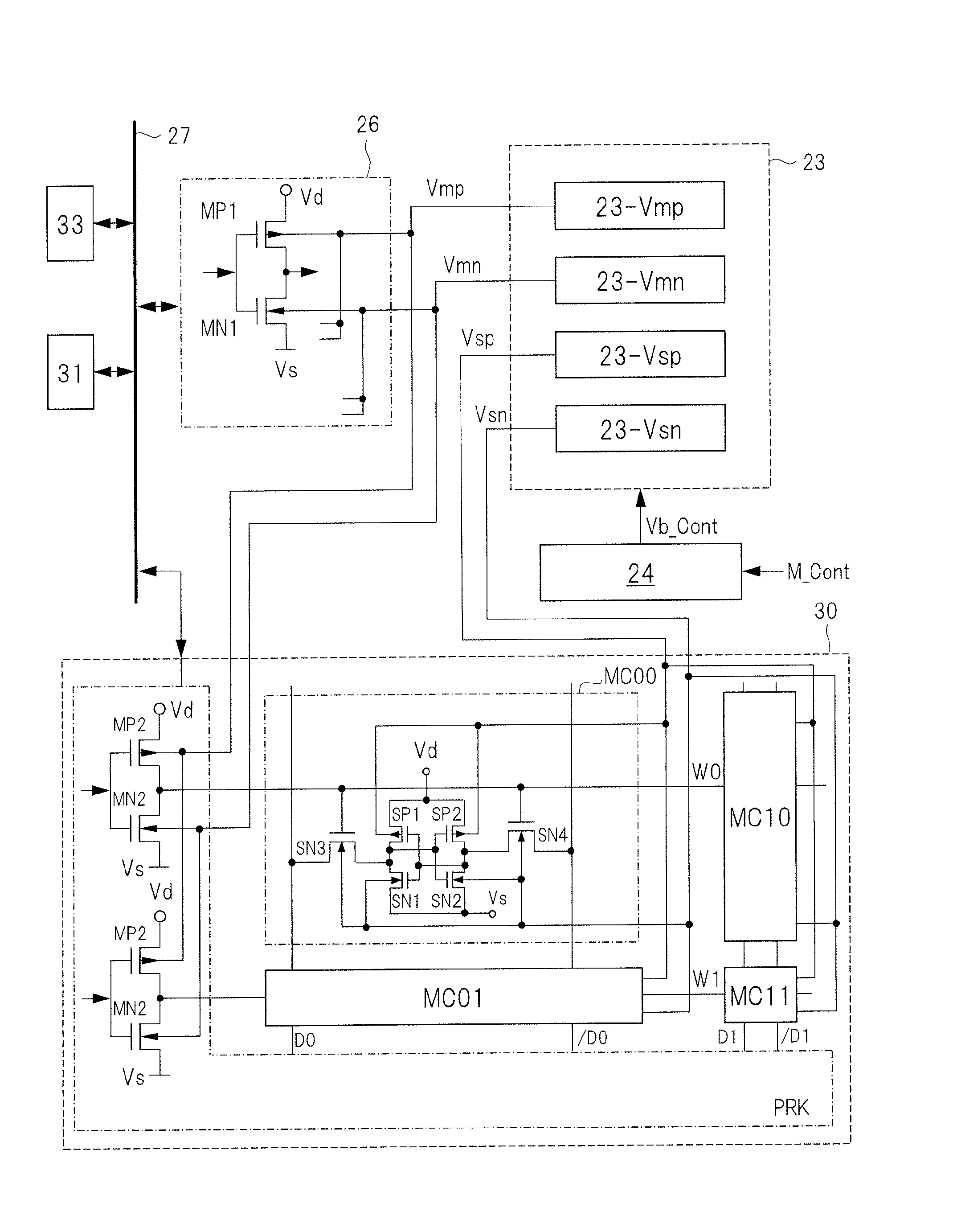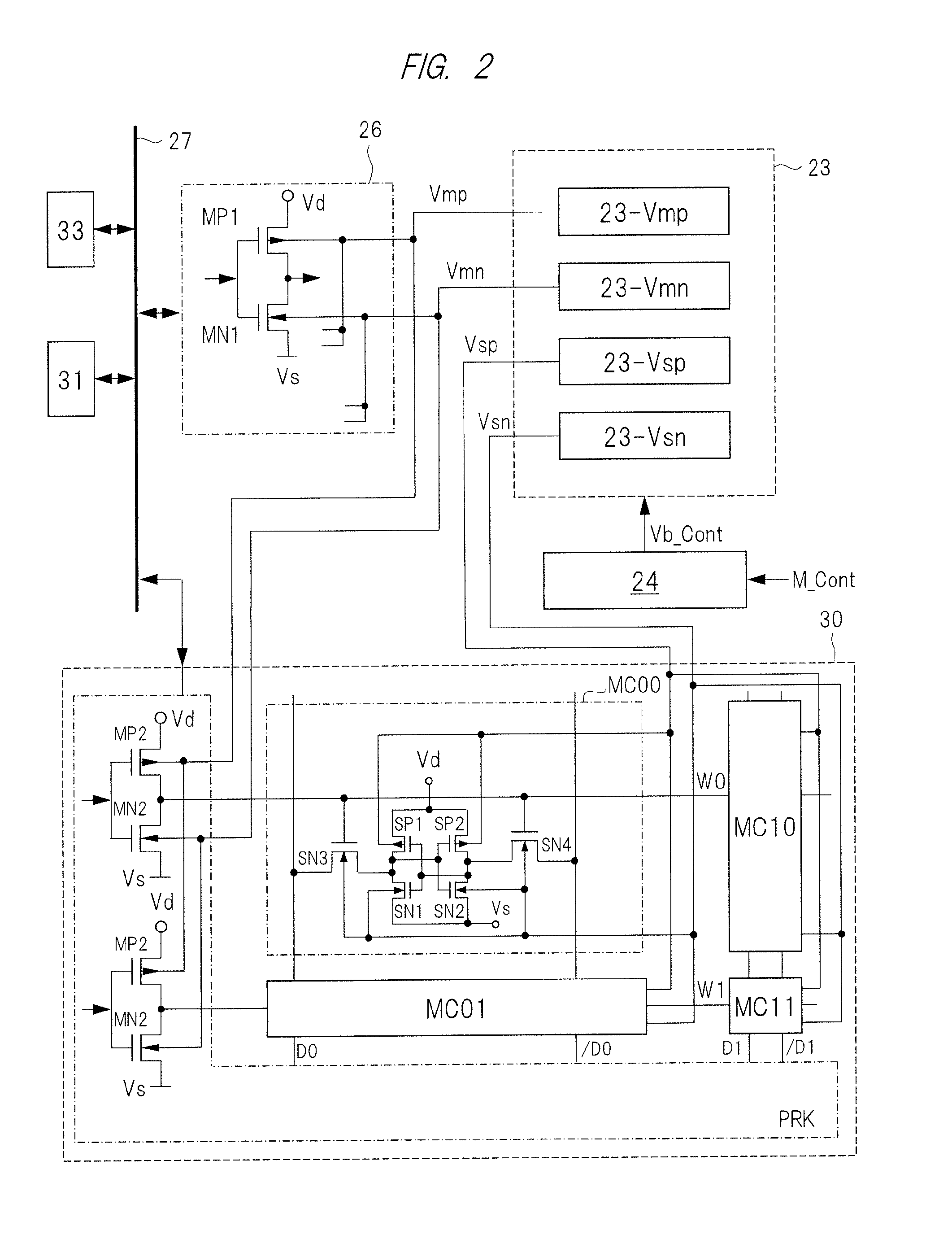Semiconductor integrated circuit device and wearable device
a technology of integrated circuit and semiconductor, which is applied in the field of semiconductor integrated circuit devices and wearable devices, can solve the problems of increased cost of portable terminal devices, high effect not expected with respect to low power consumption etc., and achieves increased cost of portable terminal devices, high effect, and increased number of mounted semiconductor devices
- Summary
- Abstract
- Description
- Claims
- Application Information
AI Technical Summary
Benefits of technology
Problems solved by technology
Method used
Image
Examples
first embodiment
Overall Configuration of Semiconductor Device
[0033]FIG. 1 is a block diagram illustrating a configuration of a semiconductor device 10 according to a first embodiment. In this drawing, the block surrounded by a dashed line indicates a circuit formed by one semiconductor chip and a bus. The semiconductor device 10 includes a central processing unit (CPU) 26, a GPIO 29, an SRAM 30, an ADC 31, a read only memory (ROM) 32, an I / F 33, an S / C 24, an I / O 22, an IOP 28, and a VBB-GEN 23. Here, the I / O 22 indicates an input / output circuit, and includes a circuit for converting a voltage level of a signal between the outside and the inside of the semiconductor device 10, a circuit for buffering the signal and the like, which are not particularly limited.
[0034]In FIG. 1, the GPIO 29 is a general purpose input / output circuit, and the microprocessor (CPU) 26 accesses the GPIO 29 through the control circuit IOP 28. The GPIO 29 transmits and receives information with respect to the outside of the ...
second embodiment
[0127]The semiconductor device according to a second embodiment is different from the first embodiment in that the voltage value of the substrate bias voltage generated by the substrate bias generation circuit 23 is changed. The configuration of the semiconductor device is the same as that of the first embodiment except that the number of substrate bias generation circuits is changed. The operation of the substrate bias circuit 23 is the same as that of the first embodiment, and the description thereof will not be repeated.
[0128]FIG. 9 is a characteristic diagram illustrating the characteristics of the P-type SOTB transistor and the N-type SOTB transistor according to the second embodiment. Similarly to FIG. 5, FIG. 9 illustrates a characteristic of the changes of the threshold voltages of the P-type SOTB transistors SP1 and SP2 and the N-type SOTB transistors SN1 to SN4 when the substrate bias voltages Vsp and Vsn are changed.
[0129]In this drawing, the broken line indicates a chang...
PUM
 Login to View More
Login to View More Abstract
Description
Claims
Application Information
 Login to View More
Login to View More - R&D
- Intellectual Property
- Life Sciences
- Materials
- Tech Scout
- Unparalleled Data Quality
- Higher Quality Content
- 60% Fewer Hallucinations
Browse by: Latest US Patents, China's latest patents, Technical Efficacy Thesaurus, Application Domain, Technology Topic, Popular Technical Reports.
© 2025 PatSnap. All rights reserved.Legal|Privacy policy|Modern Slavery Act Transparency Statement|Sitemap|About US| Contact US: help@patsnap.com



